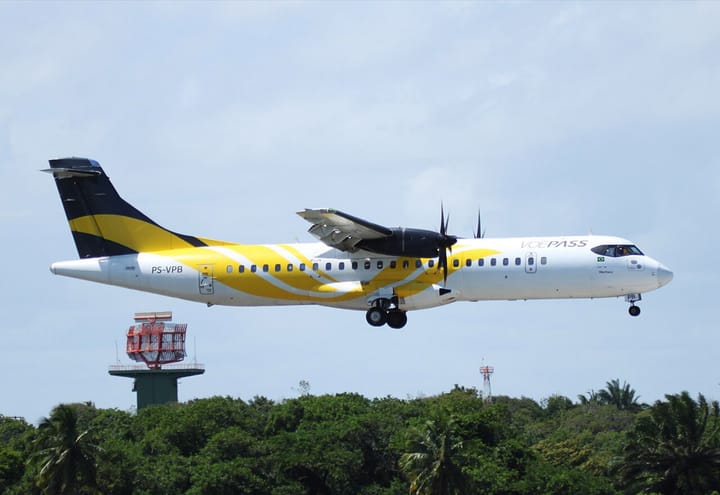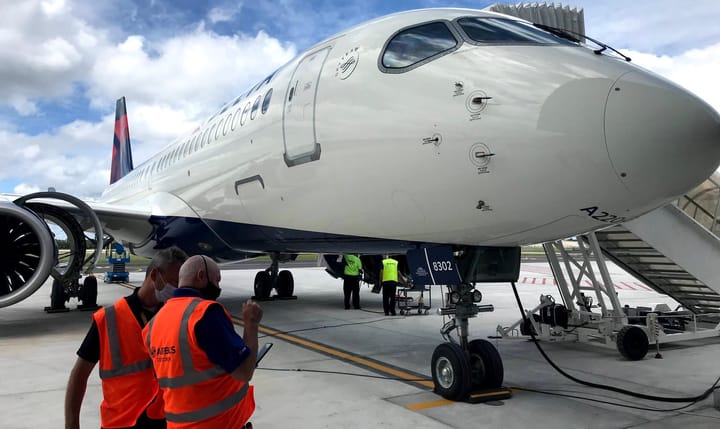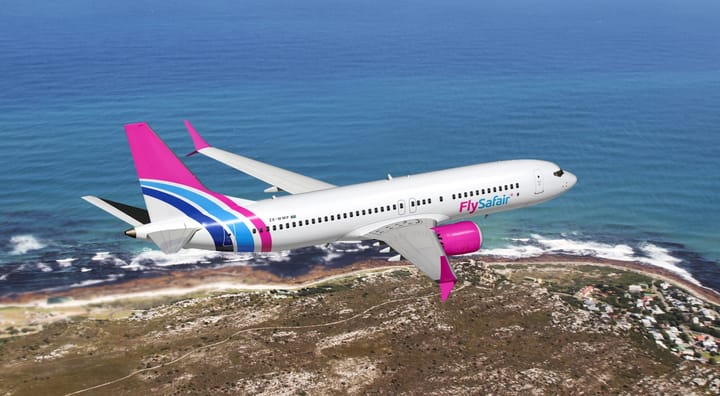There can be no doubting that Boeing finds itself in a precarious position. The airframer has suffered more significant blows to its reputation with the latest door plug separation incident. But is it possible for Boeing to discontinue the 737MAX?
After the NTSB released preliminary information related to the incident, Boeing CEO David Calhoun as good as fessed up that the incident was the fault of Boeing, and that it was due to quality control issues in its manufacturing process. Fresh calls have been made for the company to end the 737 MAX line. It’s easy to make such calls when sitting outside looking in, but make no mistake – Boeing has no choice but to roll with the 737 MAX family.
To answer the question of the feasibility of ending the 737 MAX line, one has to start at the beginning. The 737 family of aircraft is probably the most ubiquitous single isle aircraft in history. Even with Airbus having made significant strides on catching up to Boeing with its A320 line, it can’t be denied that the American aircraft has seen great success over the years.
Competition with Airbus became serious at the start of the new millennium, and a see-saw sales battle has been ongoing since then. The next logical step at the point when the A320 and 737-800 were in service, was to create versions of these aircraft that could offer its customers significant gains on fuel burn and range as the price of fuel soared. These had to be significant upgrades of their existing airframes, or clean sheet designs. Airbus’ answer was the A320neo, an upgraded version of the A320 family equipped with either CFM International LEAP or Pratt & Whitney PW1000G engines. Boeing came up with the 737 MAX, using the same CFM LEAP engine that Airbus uses on the A320neo.
The fact that these two competitors upgraded existing airframes instead of going with clean-sheet designs was a significant factor that eventually lead Boeing down the precarious path it currently finds itself on. The newer generation of engines that these aircraft needed to use have significantly wider diameters than older generation engines, and this is where the trouble started. The Airbus A320 series had the fortunate advantage of already having been designed to stand high off the ground, with plenty of engine to ground clearance. The Boeing 737-800 and 900 however had engine to ground clearance of a mere 46cm at minimum compared to the legacy A320 with 57cm. The differences may not seem all that significant, but it was enough in Boeing’s case to force a series of redesigns that ultimately caused a multitude of issues.
In order to accommodate the new CFM LEAP engines, Boeing had to redesign the aircraft’s undercarriage and move the engines forward of their original position, a change that moved the aircraft’s centre of gravity forward and changed flight characteristics when additional thrust was applied in certain flight envelopes, giving the airframe a natural nose up pitch tendency. In order to correct this tendency, the airframer relied on changes to the fly-by-wire software, specifically pertaining to a new software feature called MCAS. MCAS is an acronym that stands for Manoeuvring Augmentation System, which in the simplest sense effectively cancels out the aerodynamic faults created by the introduction of the new engines. As many would know, it was MCAS that was at the center of the Lion Air and Ethiopian Airlines 737MAX accidents. Software faults that were not identified during the flight testing phase were to blame, and it was in the wake of those accidents that the FAA (in some opinions rather reluctantly) forced Boeing to review the system and spearheaded an in-depth investigation that eventually identified a multitude of quality control issues and organizational shortcomings.
When this most recent door-plug incident occurred, it was an immediate indication that the issues identified in the initial FAA investigation had not done what it needed to do, and that quality issues persisted in the company.
The barn has been bet on the MAX
One thing cannot be denied – Boeing is heavily invested in the success of the 737 MAX. Of all the newer generation aircraft that make up the majority of Boeing’s order book, the MAX is by far the most popular, with 4,783 unfilled orders at time of writing to the value of between $500 – $600 billion. Its nearest competitor is the 787-9 with 586 infilled orders. It is this that brings us to the crux of the question: can Boeing end the 737MAX line?
Ceasing the production of this family of aircraft would have dire consequences to the company. Not only would they have to refund any payments already received for their firm orders of the type, it would mean the closing of tooling and production facilities that have been developed specifically for the type
In financial senses, absolutely not.
Ceasing the production of this family of aircraft would have dire consequences to the company. Not only would they have to refund any payments already received for their firm orders of the type, it would mean the closing of tooling and production facilities that have been developed specifically for the type, re-allocation and loss of human capital, and the unenviable task of falling far, far behind its European rival. Designing, testing, certifying and getting a new clean-sheet aircraft into production would take years, and even at that point the problems are likely to be the same, because while the 737MAX had inherent design flaws and several other issues to overcome, all of these things could have been resolved if the now deeply entrenched leadership and cultural issues had been addressed. A clean-sheet design created by the same company with the same cultural issues will harbour very similar issues.
Even though the issues with MCAS and the latest quality issues cast the MAX in a negative light, they are fixable. If Boeing can recruit leadership able to tackle these issues and set about an overhaul of its quality controls and culture, they would be able to move on from this unfortunate time in the company’s history. Many airlines are invested in the success of Boeing as a whole, and no one wishes the airframer to perish at all. It is time for Boeing to take a very long and hard look at itself, and build new trust with its employees and customers, and hopefully continue to produce the wonderful aircraft the company has been known for over the decades.
Sources:
https://www.statista.com/statistics/273941/prices-of-boeing-aircraft-by-type/
https://www.boeing.com/company/about-bca/#/prices
FEATURE IMAGE:PAUL WEATHERMAN/BOEING





